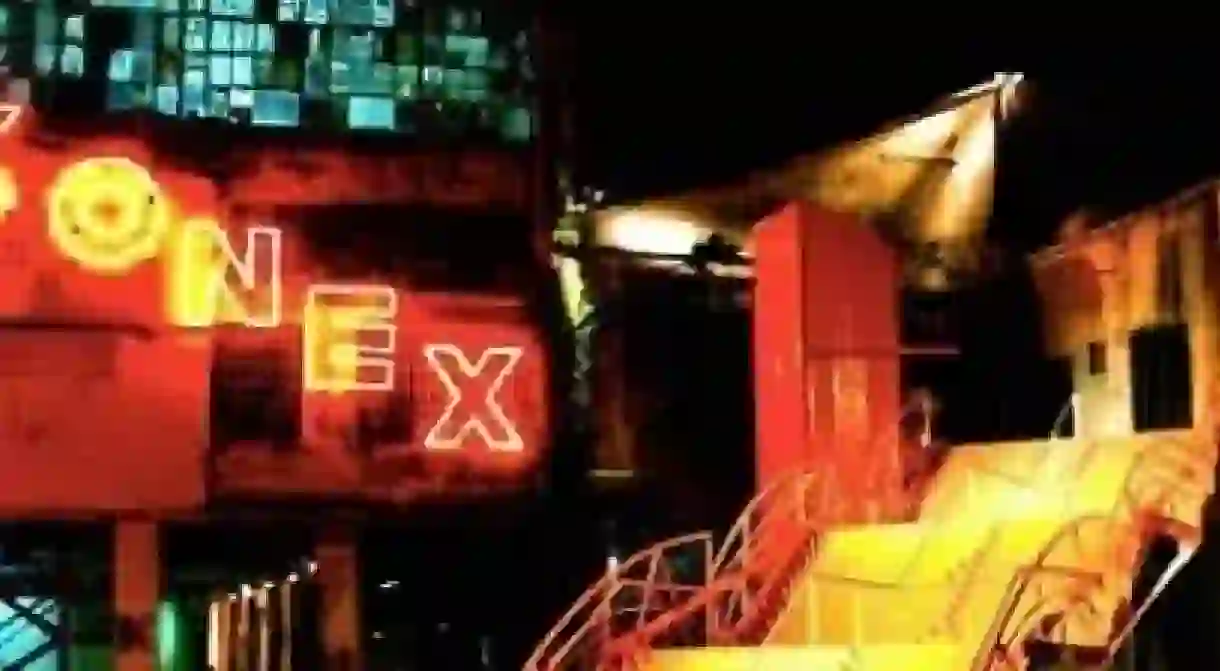Unmissable Places In The Lively Neighborhood Of Almagro, Buenos Aires

Despite the emergence of high-rise buildings and significant growth in population, the Buenos Aires neighbourhood of Almagro has preserved its unique charm and architectural heritage. Filled with classic milongas, historic cafes, and many cultural centres, Almagro is certainly a neighborhood worth a visit. Unlike the better known areas of San Telmo or La Boca, it maintains a more local crowd, and is one of the most vibrant communities to be found in the capital. In this guide we look at five local venues that best demonstrate the culture of the extraordinary neighborhood of Almagro.

El Boliche de Roberto
Located in the quaint square of Plaza Almagro, el bar de Roberto (Bulnes 331) is a place that will stick in your memory. To act like a real porteño, or Buenos Aires local, walk up to the bar, ask for a fernet-cola, and enjoy the live music show. Musical guests range from tango duets to skilled guitar players, who accompany their stringed melody with powerful vocals. Meanwhile visitors can enjoy the classic interiors complete with old wooden furnishings, or gaze outside the window at the animated crowd that regularly gathers in the alley, and become inspired by this historic place (it is one of the 73 ‘bares notables’ of Buenos Aires). The intimate atmosphere charged with memories, the warm lighting, and the informal attitude of the costumers will makes a visit to this bar a great experience not to be missed.

Ciudad Cultural Konex
Close to the Abasto, an old market now restored as a shopping centre, Konex (Sarmiento 3131) represents one of the brightest cultural centres of the city. Thanks to a total renovation by Argentinian architect Clorindo Testa in the late 1990s, this old cooking oil farm has been given a new life as a cultural hub. The extensive list of weekly events includes an array of concerts (the most famous happens every monday from 7pm, with the drummers of ‘La bomba del tiempo’), exhibitions and special happenings such as Pecha Kucha nights.

La Catedral
This grand building, which dates back to the end of 1800, was once a granary and then a milk products factory; nowadays, it is part of the artistic and touristic heritage of the Almagro district. Located near Plaza Almagro (Sarmiento 4006), it owes its name to the building’s modern day purpose, serving as a kind of holy place for tango in Buenos Aires. Behind a hidden entryway, a long staircase leads into the great hall. Here, a series of historic features, the old roof constructed of wooden trusses, a giant black and white picture of tango singer Carlos Gardel, and a number unidentified relics, mix in incredible artistic chaos. In La Catedral you can enjoy a tango class, eat in the vegetarian restaurant near the dancing floor, or just take in the impressive architecture. For its precious history and its magical aura, La Catedral was selected as a setting for various films including the German documentary 12 Tangos, to a music video by the Argentinian singer Andres Calamaro. La Catedral is an Almagro landmark.

Lo de Mary
Lo de Mary (Humahuaca 4099) is an informal dining spot for those in search of delicious meat, far away from the glamorous restaurants of the tourist ridden neighborhoods of Palermo or Recoleta. Behind a blue curtain and green walls, friendly waiters welcome customers with an impressive assortment of wines and a menu straight from a carnivore’s dream. Here dishes are written on a chalkboard, bottles of wine overcrowd long shelves and a great parrilla (grill) takes a dominant place in the heart of the restaurant. Usually an older gentleman can be seen manning the giant grill, proving to his customers that, in the matter of meat, Argentinians are experts.
Teatro Ciego
This theatre, situated near the Abasto shopping centre (Zelaya 3006), operates around a truly unique concept. As the name ‘blind theatre’ suggests, performances here explore the sensations of a sightless theatre experience, as shows are acted in the total absence of light. The audience is thus required to observe activity with the mind’s eye, arousing all of the other senses. The list of events at the theatre also includes sightless tango classes and a clown course, both for blind people and those with perfect vision. Teatro Ciego allows visitors to investigate new sensorial dimensions to discover new ways of perceiving the world.













